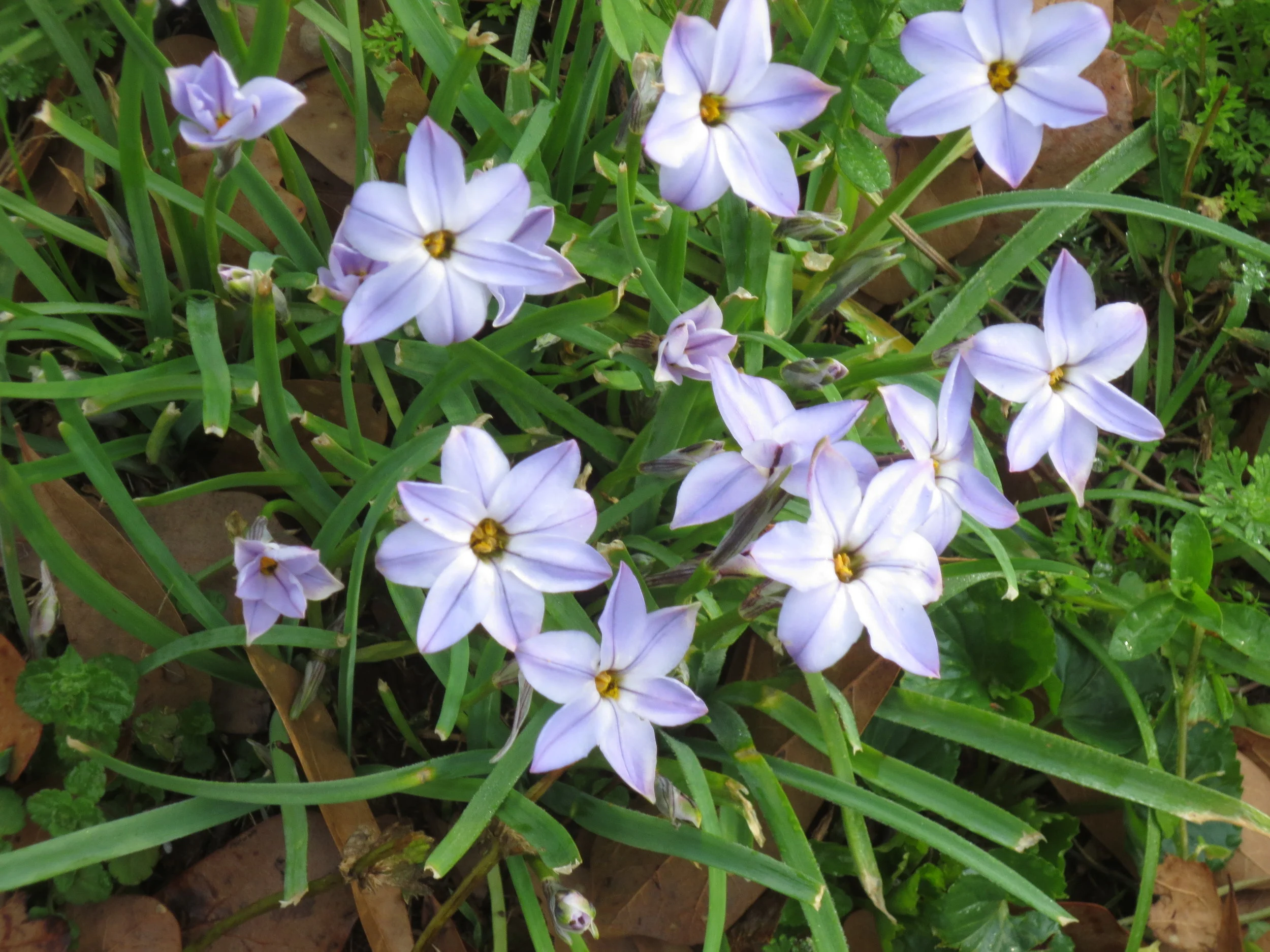Spring is in the air and bulbs are blooming everywhere in the Mary Snoddy garden. I gave up on tulips (also known as field mouse caviar) years ago and add a few more daffodils every autumn. One bulb that was here on the property before I arrived as a bride is Ipheion uniflorum, pronounced IF-ee-on.
Ipheion, sometimes called Spring Starflower, is a tiny little bulb in the same family as Amaryllis. They bear six-petaled blooms one inch in diameter, usually in shades of blue although white cultivars are available. The medium blue shades look especially pretty when paired with darker blue grape hyacinths and some of the paler yellow daffodils. The plants only grow to six inches or so, but they multiply rapidly to make impressive clumps. Foliage is a narrow bluish-green leaf that resembles a clump of grass. The bloom period lasts several weeks.
I have allowed mine to naturalize throughout flowerbeds that would normally be barren until it is warm enough to plant annuals. They have spread into the lawn also. I use their beautiful blooming swaths as a valid reason to delay cutting the grass. Once most of the blooms are spent, I decapitate them with the lawnmower. This does not seem to affect their future health in any negative way. When the foliage is cut or bruised, it gives off a sharp odor that some people describe as oniony. I think it is more skunk than onion, but I do not find it particularly unpleasant. The foliage dies back naturally after blooming. Foliage may occasionally return for a few weeks in the fall, but this is of no concern.
The bulbs are carefree. No need to fertilize or irrigate. The blooms attract pollinators. Squirrels, rabbits, deer and voles leave them alone.
Start with a grouping of at least twenty bulbs to make a good show. They multiply quickly, so you can divide and spread once they are established or let Mother Nature spread them about. They reproduce by both seed and bulb offsets. Bulbs are hardy in zone 5 to 9. Ipheions bloom best in areas that are under deciduous trees, receiving full sun in winter and early spring, then partial shade as their bloom season ends.
A happy clump of Ipheions
This group has meandered its way into the lawn.


